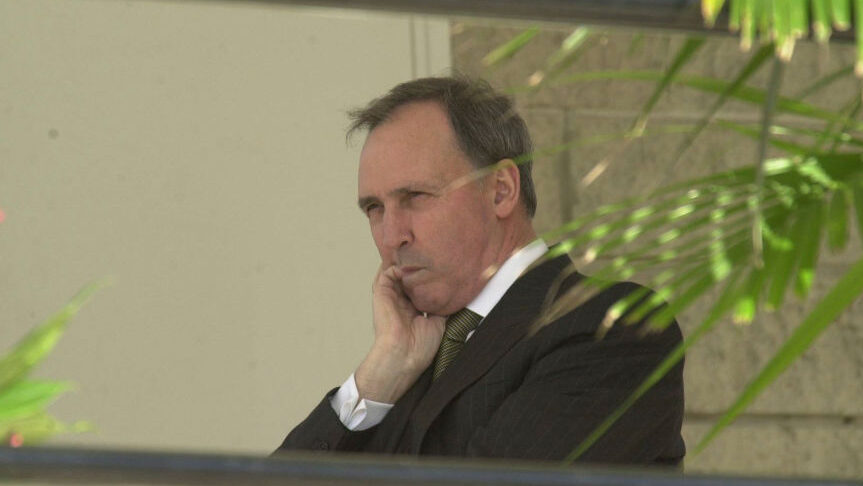The Big Shake-out: Is this the lithium recession we had to have?

Pic: Patrick Riviere/Getty Images via Getty Images
- The lithium downturn could ‘shake out the fluff’ and put the sector on a road to longer term stability: GL1’s Ron Mitchell
- Low prices could see more projects curtailed: ANZ
- Downstream demand shines a light on the long-term outlook for the EV metal
Some people want to do you slowly, as Paul Keating famously told ill-fated Liberal challenger John Hewson in 1992.
Instead, Chinese battery makers have been doing lithium investors very, very fast.
Prices for Aussie spodumene crested at over US$8000/t in the final quarter of 2022, falling to US$850/t in early 2024 as supply outpaced demand growth from the electric vehicle sector.
But one of the WA lithium sector’s leading voices suggests this could be lithium’s recession it had to have, to pull another phrase from the Keating playbook.
In 14 years in the lithium sector including 10 as an executive at the Greenbushes mine and its Chinese co-owner Tianqi Lithium, Global Lithium Resources (ASX:GL1) managing director Ron Mitchell says he’s survived three bear markets.
This one could bring the shakeout that will return confidence and correct volatility in the market, he believes.
“You needed to shake out a lot of the fluff because if you look at you look at the trigger of an $8000 all time high spodumene price, it just triggered this wave of investment into raw material projects,” he said on the sidelines of the RIU Explorers Conference in Fremantle.
“Projects that ordinarily would never have a chance in hell of being sustainable on a long term basis, everything made sense at $8000 bucks a ton.
“Now we’re in a situation where the reality is kicking in, I think investors are far more sophisticated, the market’s more sophisticated and the reality is an incentive price somewhere between, say US$1500 and US$1750/t … allows enough projects to get up but not too many.
“So the market is going to continue to mature from a pricing perspective.
“I probably agree it’s a shake-out absolutely, we needed to have.
“As hard as it’s been in terms of equities being hammered, in the long term maybe we’ll look back two, three years from now and say, well, what happened in 2023 and 2024 is exactly what the market needed.”
Global Lithium Resources (ASX:GL1) share price today
Further lithium projects to be curtailed: ANZ
Since the start of 2024 multiple lithium mines have run into trouble, with Core Lithium (ASX:CXO) halting mining at its Finniss mine in the NT, Liontown Resources (ASX:LTR) seeing support from bankers for a $760 million funding package at its Kathleen Valley mine dissipate and the world’s largest lithium operation at Greenbushes in southern WA slowing production.
Tim Robertson, the junior resources relationship manager for WA at ANZ — one of the banks in the Liontown consortium — said more mines would likely be curtailed with supply expected to run ahead of demand growth in 2024.
“To give you a sense of this lithium supply has nearly doubled in the last couple of years and this year ANZ is forecasting that production of lithium will increase by 40% but demand will only increase by 25%,” he told delegates.
“And so whilst lithium still remains long term in demand as part of the decarbonisation journey, in the short term, at least we’re seeing producers whacked with this double whammy of profit margins coming down in a market that’s already over supplied.
“So we may unfortunately see further lithium projects being deferred or existing projects curtailed.”
He said more new projects were also being pushed up the cost curve.
“We’re seeing many mining operations put under severe stress when prices are deflated for long periods. And so we’re looking to fund projects where there’s fat in the game,” Robertson said.
“We’re looking to fund projects where there’s capacity to meet additional cost overruns during construction, or at the very least, we’re looking for projects where we can put in place some structural enhancements that can reduce the cost risk.
“Things like hedging, or projects that are lowly geared will have a lower cost base to begin with.”
Downstream stokes demand hopes
One of a number of local explorers and developers with Chris Ellison’s Mineral Resources (ASX:MIN) prominent on its share register, Global Lithium hosts a resource of 36Mt at 1.13% Li2O at its Manna project east of Kalgoorlie.
Mitchell views 2027 as the rough date for when it will be ready for the market, leaving plenty of water to run under the bridge in terms of the structure of the lithium market.
He attributes much of the price volatility to the way Chinese purchasing managers operate, pushing prices lower by holding off when prices are going down and buying up in surplus when prices are rising in fear of copping higher costs down the line.
“It’s raw materials, spodumene, it’s looking chemicals, its cathode, its battery cells. At the moment. It’s all hand to mouth because in China, if the purchasing manager thinks they can buy a product cheaper next week, they won’t order this week,” he said.
“But then conversely, when the market moves the other way, and they think the price is gonna go up next week, instead of ordering one unit, they order two.”
With prices having recently fallen through US$1000/t and on a downward trend since late 2022, Mitchell thinks the upside is ahead for lithium explorers given the history of previous bear cycles which have run for around two years.
He said we will see more supply discipline, whether that is further curtailment from incumbents or delays for developers like GL1, who were able to raise substantial quantities of cash to underpin exploration and study work during the bull market.
“Definitely (I see) more discipline from the incumbents. They’re not in the situation they were four or five years ago where they had to make sales,” he said.
“I think they’ll be a bit more prudent in terms of how they put units to market and no one’s going to be selling below their cost base.”
Longer term, Mitchell said downstream demand from OEMs and lithium investments from international majors like Wesfarmers (ASX:WES) and Rio Tinto (ASX:RIO) showed the outlook remained positive in the EV supply chain.
“They don’t particularly care what the lithium price is doing today. It’s 5, 6, 10 years from now is when those projects are going to be in place,” Mitchell said.
“The second part to answer that is just the interest we’re receiving from the downstream and it’s a combination of the OEMs, direct end users in terms of converters, cathode, battery traders, and globally as well.
“Japan, Korea. Of course there’s strong interest in China, there always will be.
“Even for the Chinese, it’s getting harder to put big amounts of capital into Africa. It’s easy to put the money in, the question is getting it back out. That’s where the challenge comes.
“And of course, Europe and North America. So if anything, this pullback in the market is making some of those buyers even more concerned because they know the next wave of development stories are going to be pulling back.”
Related Topics

UNLOCK INSIGHTS
Discover the untold stories of emerging ASX stocks.
Daily news and expert analysis, it's free to subscribe.
By proceeding, you confirm you understand that we handle personal information in accordance with our Privacy Policy.








